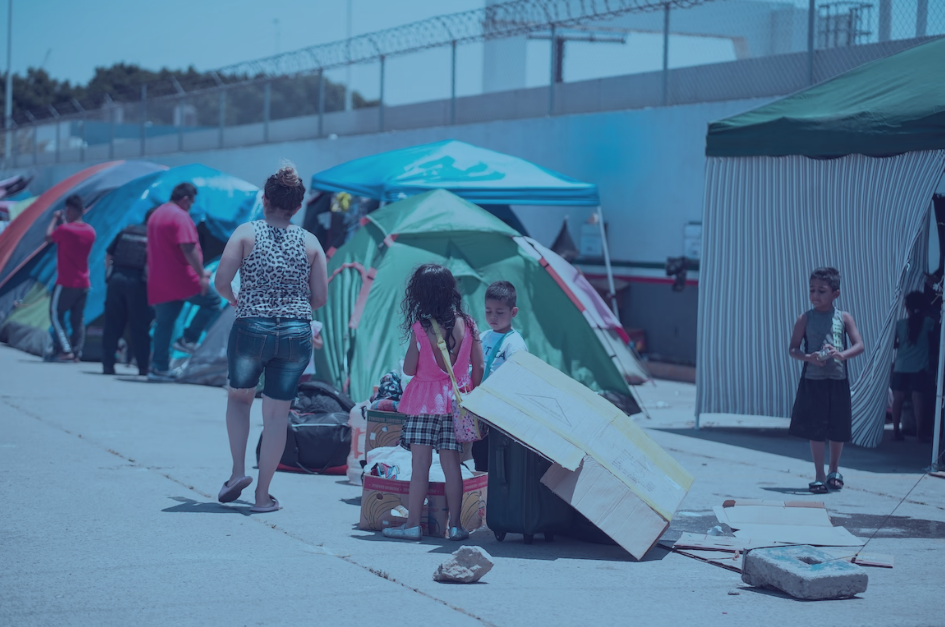
Written by Andrea Ricci
The ongoing Ukrainian crisis and the activation of the Temporary Protection Directive (2001/55/EC) have shown that new ways of addressing migration phenomena are possible. Why not try to disentangle the innovative push from crisis interventions? New actors and practices for coping with migration inflows can be crucial. What if we start thinking about the European Union Asylum policy in a less rigid and ready-made way? This article proposes a (provocative) example of how things could go differently.
Introduction
Why is it important to start describing transnational migration governance arrangements through a scalar perspective? The answer asks to reconsider the current paradigms of the ‘multilevelness’ of policymaking structures and how the actors relate to each other within them. Starting from the latest news regarding the ‘Ukrainian migration crisis’ and the deployment of the Temporary Protection Directive, the article suggests abandoning a multilevel governance perspective on political dynamics shaping migration governance at the EU level for a more attuned scalar perspective. The example of the transnational municipal networks, the Palermo Charter Platform process and the ensuing International Alliance of Safe Harbours show how a new framework can help academics and policymakers to put forward new solutions for innovating EU migration policies. The article will shed light on the enhancing role of municipalities in transnational municipal networks. Municipalities, through these spaces of confrontation and debate, spur new policymaking configurations of EU polity. In presenting such an extreme case, the author will deliberately assume a radical and provoking stance to highlight the conservative standing the EU and its member states continue to adopt without advancing transformative efforts.
Temporary Protection Directive and Ukraninans: A critical key to reasoning
Last week the number of Ukrainians who currently asked for Temporary protection reached an impressive number of 4.7 million since February, when the Russian invasion of the Eastern territories forced them to flee their country. The Temporary Protection Directive moves some steps forward in the direction of the tentative reform of the Dublin regulation anticipated in 2020’s Pact on Migration and Asylum. It triggers actions for implementing a new framework for asylum policy and redistribution practices among member states that, unfortunately, still have not been negotiated among member states. The importance of the Temporary Protection Directive (still never applied after its adoption in 2001) stems from the emphasis on creating legal channels of movement for Ukrainians affected by the conflict outbreak. Nevertheless, some observers wonder why the EU has waited for arguably four migration crises and twenty years to adopt such a directive. Genç and Öner (2019) highlight the unwillingness of member states to engage in a strong effort of responsibility and burden sharing concerning migrants’ reception and hypothesise a radical crisis in the EU’s fundamental principles. In other words, politics continue to overcome fundamental rights and humanity.
Moreover, some questions about the repercussions of such a directive on the overall European asylum system remain unanswered. What will happen to the approximately 5 million Ukrainians registered for temporary protection currently in the European Union’s member states? When the temporary protection expires, will all the Ukrainians be allowed to enter the already crippled asylum and international protection procedures and, thus, in the national asylum systems? How will the millions of people asking for protection be dealt with when, in the past, a few thousand have made people foreshadow the ‘invasion’ (De Haas, 2008; van Houtum & Bueno Lacy, 2019)?
Municipalities, or where everything happens
The debate around legal channels of entry into the EU mainly relates to places: cities, municipalities and harbours. Municipalities took on the lion’s share in the reception of migrants. Great attention has been devoted to local efforts and initiatives on which mayors and their supporters have embarked. Although mainly mayors of big and ‘super diverse’ cities (Vertovec, 2007) have drawn considerable attention in academia (Penninx et al., 2004; Alexander, 2007; Scholten, 2013), small and medium-sized towns are also gaining significant credibility in research as models of bargaining ability and political entrepreneurship (Kos, Maussen & Doomernik, 2015; Hinger, Schäfer, & Pott, 2016; Caponio, Donatiello & Ponzo, 2021; Haselbacher & Segarra, 2021; Hillman, 2021; Panebianco, 2022; Bazurli, Caponio & de Graauw, 2022; Trucco, 2021). The general exacerbation of migration policies has boosted the activism of cities in promoting and protecting human and civil rights against the authoritarian conservative root of migration policymaking (Lacroix, Furri & Hombert, 2022). In the US and UK, since the early 2000s, several cities aimed at preserving human dignity started engaging in peculiar actions, then transformed into authentic social movements involving civil society and citizens, promoting a radical change in asylum and integration policies at the local level. ‘Sanctuary cities’ (Ridgley, 2013; Bauder, 2016; Kagan, 2018; Lasch et al., 2018; Collingwood & O’Brien, 2019) started to spread the concept of diversity in European societies and foster mutual help among cities in dealing with the migration phenomenon. A similar trend can be identified in the Southern European cities, which, during the so-called 2015’s migration crisis, began to play a role in contrasting securitising policies promoted by governments. ‘Safe harbour’ movements (Guild & Carrera, 2013; Ataç, Rygiel & Stierl, 2021; Baumgärtel & Miellet, 2022; Lacroix, Furri & Hombert, 2022) still today preserve their media resonance. Several examples of the contrast between cities and the central government can be found in the episodes of closing harbours in Italy.

 The ’Ndrangheta’s Infiltration and Threat to European Institutions
The ’Ndrangheta’s Infiltration and Threat to European Institutions  From Paper to Practice: How Grassroots Norms Undermine Gender Rights in Pakistan
From Paper to Practice: How Grassroots Norms Undermine Gender Rights in Pakistan  Exploited Childhoods: The Role of Global Corporations in Perpetuating and Mitigating Child Labour
Exploited Childhoods: The Role of Global Corporations in Perpetuating and Mitigating Child Labour  Human Rights Challenges in Addressing SLAPPs in Media, NGOs and Journalism in the EU
Human Rights Challenges in Addressing SLAPPs in Media, NGOs and Journalism in the EU 


